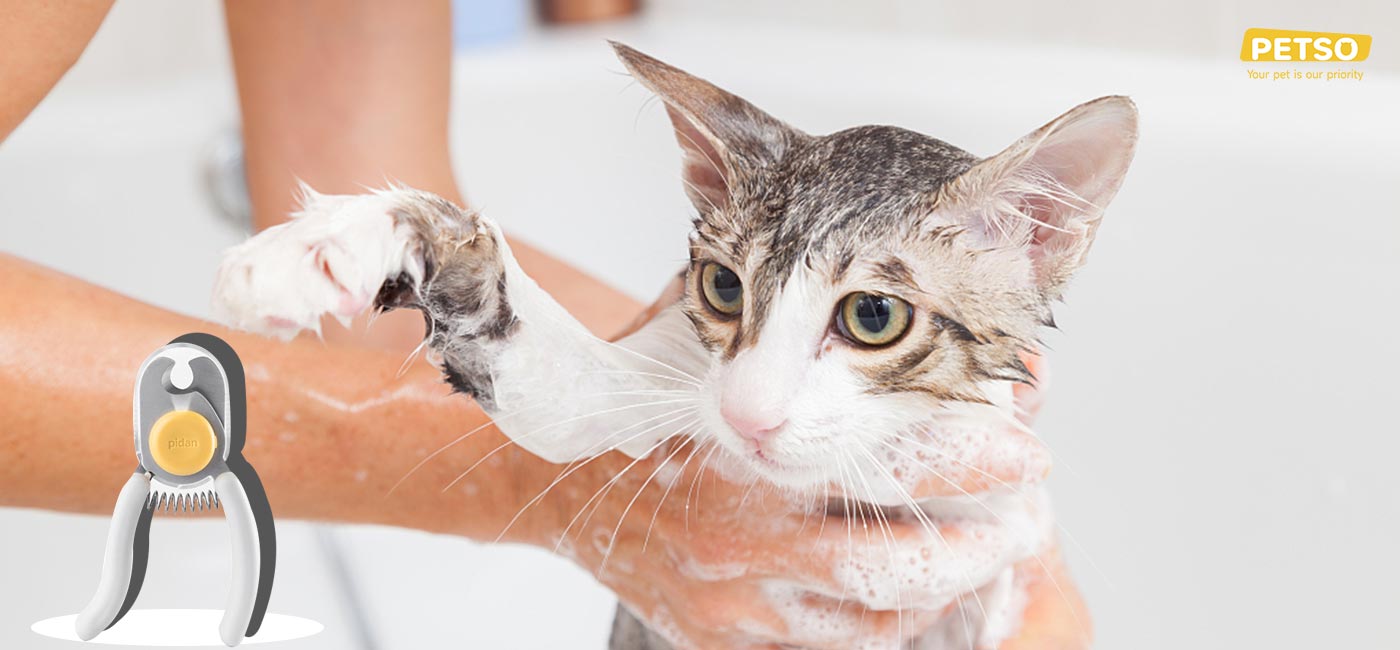Why do other people’s cats you see online willing to take a bath, but your cat doesn’t? It even loudly protested and ran away when it heard the keyword "bath" as if we were going to torture it. How exactly should you get your cat to take a bath? Today we will teach you the secret of cat bathing!
Why are cats afraid of water?
-
Ancestors of cats
Dr. John Bradshaw of the University of Bristol indicated that most domestic cats today are descended from the "Arabian wildcat" and their main areas of activity were near the deserts of Africa and Asia. There is no water source there, so cats are not familiar with water, which is the primary reason for fear of water. Secondly, there is a huge temperature difference between day and night in these areas. If the body is too humid at night, the body temperature will drop rapidly, which may threaten their survival. Moreover, cats’ fur is thin and lacks oil to make it waterproof, so it is not easy to dry after getting wet.
-
Cat's body odour
Cats are animals with a keen sense of smell, and smell is very important to them. They spend a lot of time grooming themselves every day in order to keep their coat tidy and retain their familiar body odourodor. However, touching water or taking a bath will wash away the body odour, which will make the cat refuse it very much.
-
Reduce sensitivity
Hunting is a natural inclination of cats. Fur collapse caused by wetness will result in a reduced sense of balance and sensitivity, affecting their ability to hunt. So wetting of the body will make cats uncomfortable.
In conclusion, cats are naturally afraid of water, and bathing cats is more for their sake. However, there are a few cats who like water and like to take a bath, and some cats are even good at swimming.
Helping your cat to take a bath
Doing some preparation before taking your cat to bathe can increase your cat's willingness to bathe and also improve the efficiency of your cat's bath!
-
Trim your cat's nails
Even the most gentle cat may fight back when they are put into water. In ordercase to minimise possible damage, you should trim their toenails before bathing them. Clipping their toenails may thrill them, so try to trim them a few hours before to give them enough time to calm down before bathing.
-
Groom your cat's coat
Don't ignore this step. It is necessary to brush your cat’s fur before bathing. This can remove the dead knots on the hair. But once the cat’s fur is wet with water, it’s not that easy, even causing the cat to feel pain. If your cat likes the feeling of being groomed, you can use a brush to attract your cat to dive into the tub and make them feel like they're in a nest.
-
Prepare bathing tools
Some good tools will make bathing your cat more convenient.
- Special bath products: Use those specially designed for pets. Never use human bath milk as it can damage your cat's skin.
- Bathing basin: If you spray water directly on the cat with the shower head, it will definitely be scared away. You can fill the bathtub with warm water and slowly wet the cat to reduce his fear.
-
Bathing brush: Bathing brush for cats can effectively clean and massage the cat's body

- Absorbent towel: Wiping the body with the absorbent towel can more quickly absorb the moisture of cats.

- Drying box: It has 360 degrees of hot air circulation to improve drying efficiency and reduce noise damage to cats.
Choose the right time for bathing
After the preparations are completed, you can bathe the cat. But do not do this when it is energetic, otherwise it will only fight with you till the end. At last, it was hard to wash, and the cat became even more afraid of bathing.
Tips
There are several tips to help cats bathe, pass them on to everyone!
- When bathing a cat, you can comfort it with a gentle voice and press your hands firmly on its shoulders or neck (do not use too much force), because the cat is still afraid of water and will want to break away and escape at any time.
- Avoid rinsing water directly onto the cat, you can use a wet towel to cover it. After ensuring the fur is wet enough, prepare the cat cleaning product and apply it evenly from the neck, body, limbs, tummy, and tail.
- When rinsing off the body wash, do not rinse the cat directly with the shower head. You can wipe it with a towel or put it in the bathtub and use your hand to get water until it is completely rinsed. Under normal circumstances, repeating it about 3 times will be fine.
- Before wrapping your cat in the towel, use a dryer to heat the towel, for cats will prefer the warmth. Wipe slowly from the face to the tail. If the towel becomes too wet, change to a dry one and use a small massage to wipe the cat. Short-haired cats normally can be dried very quickly, while long-haired cats are more likely to get tangled when they get wet, so you will need to prepare a comb and more patience to dry your cat.
Congratulations on finally finishing bathing your cat, but there is one last very important step, and that is don’t forget to reward your cat with a treat or can after bathing. They will gradually notice that bathing is not such a bad thing! In this way, you will become more and more skilled at bathing your cat in the future!






